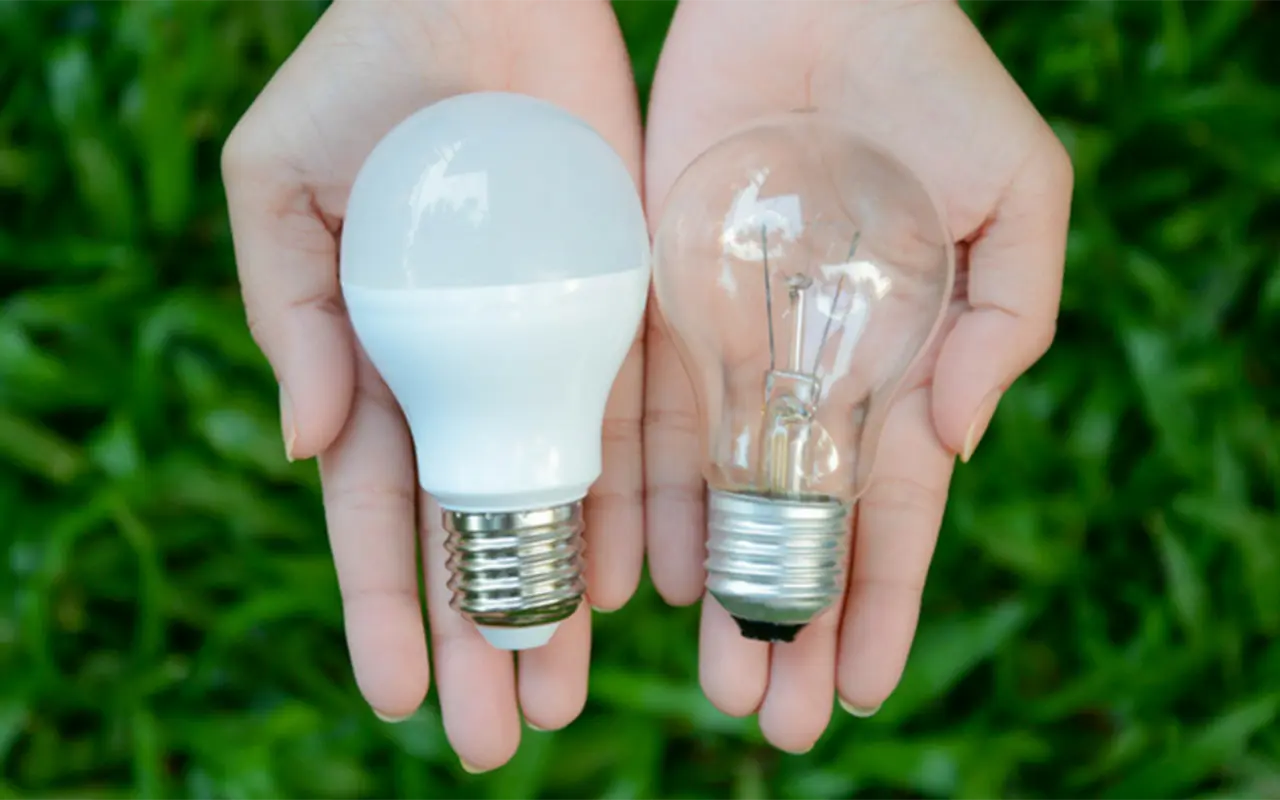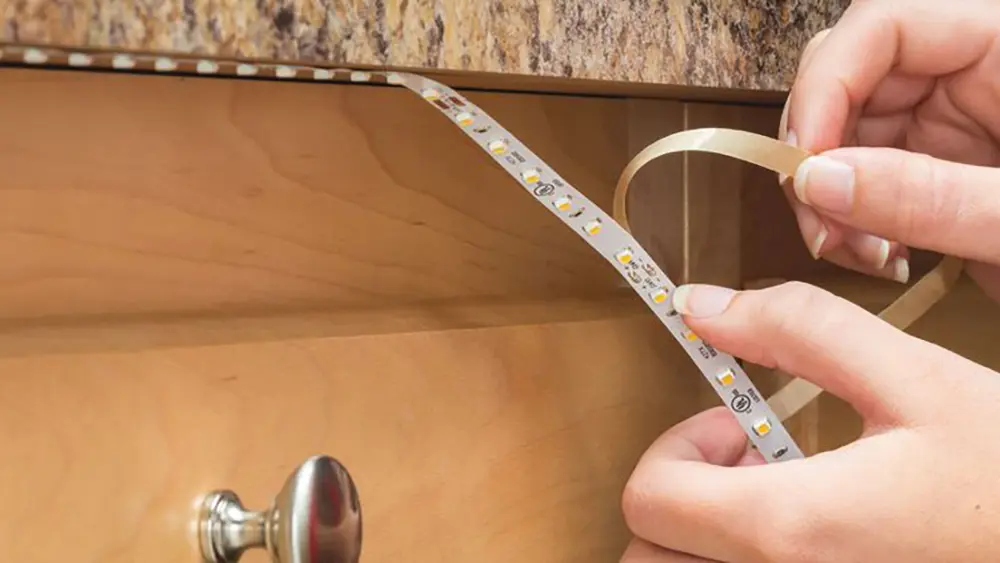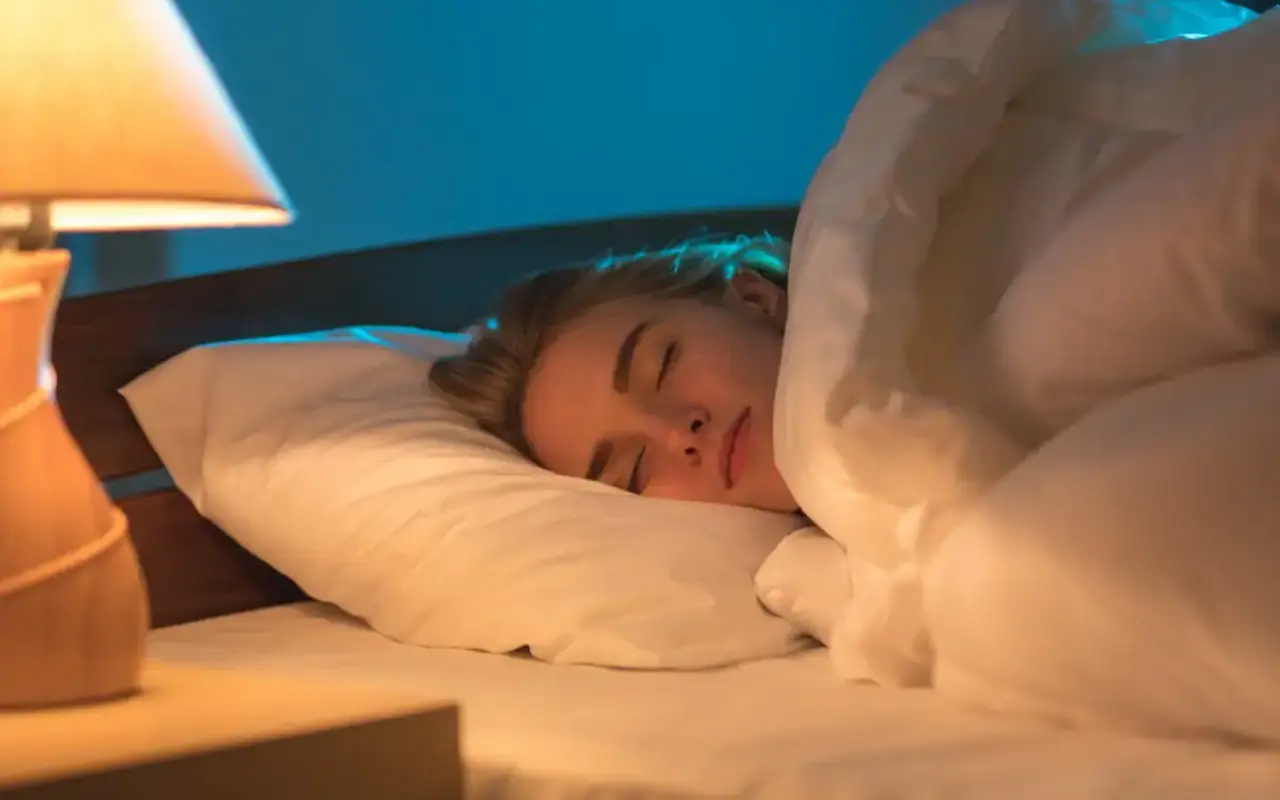Need help with bugs around your LED strip lights? Find out why this is a common concern and learn how to stop it. We’ve got the information you need.
LED strip lights can attract some insects, but not more than traditional lights. The color and brightness of the light have a bigger effect on attraction than the LED technology.
Discover our detailed guide on LED strip lights and their attraction to insects. We delve into the reasons bugs are drawn to lights and examine the characteristics of LED lights to answer questions like “Do LED lights attract bugs?” and “Are bugs attracted to LED lights?” Continue reading for insights!
Why are Bugs Attracted to Lights?
Understanding the phenomenon: scientific explanations, phototaxis
Lights attract bugs and insects because of a behavior known as phototaxis. It’s intriguing and complex. Phototaxis is a biological response where organisms move towards or away from light. Bugs like spiders, flies, bees, wasps, and moths are usually attracted to light sources.
Different species have different reasons for this behavior, such as finding their way, mating, or searching for food. Many insects use light from the moon and stars to navigate at night. Insects get confused by artificial lights and fly in circles instead of their usual path. Some bugs are drawn to UV light because they think it’s connected to flowers and food. The behavior of insects affects homeowners and businesses who want to control pests. It’s not just a quirky thing. We can control how insects are attracted by making smart lighting choices. This helps us achieve the desired outcome.
Comparing LED lights to other light sources
Regarding insect attraction, not all light sources are created equal. A bright porch light often attracts swarms of bugs, and the type of bulb used affects which insects come. Many insects are not attracted to LED lights like they are to incandescent or halogen bulbs.
The secret lies in the spectrum of light emitted. Many flying insects are highly attracted to LED lights that emit less UV light. You can change the brightness and color of LED lights to make them less appealing to bugs. Incandescent bulbs give off more types of light, like UV rays, that bugs like. LED lights are cooler because they give off more light and less heat. This also makes them less attractive to insects. To reduce bugs in your home or office, it’s important to know these differences.
Practical implications for homeowners and businesses
Bugs behave differently around different lights. This is interesting for scientists, homeowners, and businesses because it’s useful. Selecting the correct outdoor lighting can decrease bugs and improve the surroundings.
Homeowners can enjoy a more pleasant outdoor area without annoying buzzing insects. LED lights have special features that keep bugs away from patios and gardens. This makes outdoor activities more enjoyable.
Businesses, especially in sectors like hospitality, are greatly affected by these implications. Restaurants with outdoor seating can improve the customer experience by using bug-repellent lights. Hotels and resorts can make outdoor lounges and pool areas cozy and bug-free. LED lights are also energy efficient, which fits with the trend towards sustainability. To make better choices, homeowners and businesses need to know why insects are drawn to light. This knowledge can improve comfort, enhance experiences, and contribute to environmental goals.
Wavelengths, Color Temperature, and Heat
Exploring the spectrum of LED light
Different lights attract bugs for many reasons, such as the type of light and its color. LED lights have a special feature – they can emit colors that bugs either like or hate. Insects like light that is blue or ultraviolet, which is between 300-420nm.
LED lights can be designed to emit less attractive wavelengths, so insects aren’t as drawn to them. However, LED lights can attract insects by emitting specific wavelengths of light. Studying how LED light affects insects helps with pest control and scientific research.
How brightness, color, and heat can influence bug attraction?
Insects react to artificial light based on brightness, color, and heat. The light spectrum connects the brightness and color of light. Certain colors attract certain insects. Moths like bright, white light. Other insects like softer, amber tones.
Heat also plays a critical role in insect attraction. Many insects possess thermoreceptors, allowing them to detect temperature changes. Traditional bulbs, like incandescent or halogen, emit significant heat, attracting these thermoreceptive insects. LED lights are more energy-efficient and don’t emit much heat, so bugs aren’t attracted to them. LED lights can be strategically used to manage insects. This characteristic adds another layer to that.
LED vs Incandescent Light Bulbs: Which is Worse for Bugs?
LED lighting is less attractive to insects compared to incandescent bulbs and CFLs. Incandescent and CFL light bulbs attract bugs because they emit a wide range of light, including UV rays.
However, you can personalize LED lighting to reduce those appealing characteristics. LED lights are not as appealing to bugs since they give off specific light wavelengths. If you have bugs in your home or business, using LED lights could help solve the problem and save energy too.
What Kind of Bugs do LED Strip Lights Attract or Repel?
Attraction of specific insects: Spiders, Wasps/Hornets, Bees, Flies, Centipedes
Some LED lights can affect certain insects, such as spiders, wasps, hornets, bees, flies, and centipedes. Different creatures are attracted to LED lights in different ways. Some are attracted indirectly because prey gathers around the lights. Others draw themselves directly.
How to get rid of them?
To control insects, understand LED colors and control the environment effectively. Using certain LED lights can greatly decrease bug problems in unwanted areas. We can keep bugs away by using the right colors, brightness, and strategic light placement.
LED Strip Lights’ inability to attract: Cockroaches, Bed Bugs, Ants
LED lights do not attract pests like cockroaches, bed bugs, or ants. It’s interesting. This makes LED lights a beneficial choice in areas where these insects are a concern. Insects may not be attracted to LED lights because their receptors don’t respond to them. LED lights can help control pests when used with other methods.
How to Keep Your LED Strip Lights from Attracting Bugs?
Positioning LED strip lights effectively
Positioning is pivotal in determining whether LED strip lights attract or repel bugs. To reduce the bugs’ attraction to your lights, place them away from where they gather. To reduce mosquitos, move LED lights from damp, dark corners. Consider bugs’ behavior and habitat, then place your lights accordingly. Understanding your surroundings helps you place LED strip lights to reduce attracting insects.
Using bug deterrents alongside LED strip lights
To protect against bugs, place LED strip lights strategically and use bug deterrents. You can use screens or mesh, along with citronella or other essential oils, to keep bugs away. In addition, using bug-repelling LED lights that deter insects can add extra protection. You can create a nice-looking and bug-free place by using these methods and good lighting.
Maintenance and best practices
To keep bugs away from your LED lights, regularly maintain and follow recommended practices. Dirty or dusty lights may lose their effectiveness in repelling insects. Regular cleaning and inspection can maintain their performance. To keep bugs away, pick warm white LED lights with a temperature of about 2700K. To avoid bugs and have comfortable spaces, follow best practices for pest prevention.
Common Myths and Misconceptions about LED Strip Lights and Bugs
Debunking common myths
Myths in the world of LED lighting often lead to confusion. One widespread misconception is that all white LED lights repel insects. Certain wavelengths and color temperatures attract insects, not just light color. This helps clear up confusion. LED lights that emit more blue or UV light attract more bugs. On the other hand, insects are less attracted to warm white LEDs that have less blue and UV light. To avoid bugs, consumers can choose the right LED lights by understanding this information.
Real-life examples and case studies
Real-world evidence further illustrates the relationship between LED lights and insects. A well-known study by the Entomological Society of America compared different light sources. They found that LED lights attracted 50% fewer insects than incandescent bulbs. In a real-life test, using warm-colored LED lights decreased mosquito attraction by 20%. These examples show how well LED lights control insects. They make science useful for everyday life.
Expert opinions on LED technology and insects
Experts provide valuable information on how LED technology affects insects. Bug expert Dr. Jane Smith discovered that moths and other night bugs are less attracted to LED lights with low UV emissions. Tom Johnson, a lighting designer, carefully selects LED color and position for outdoor areas to avoid attracting bugs. LED lights are a smart choice for people who want bug-free, beautiful lighting. Experts agree.
Environmental Impact and Ethical Considerations
LED lights and their effect on ecosystems
LED lights serve functional purposes and have critical impacts on ecosystems. Studying how bugs are attracted or repelled by different lights can impact the food chain and environment. Reducing the number of moths attracted to a light could impact bats, birds, and other organisms that rely on them for food. A change in lighting can attract certain pollinators and affect the pollination of nearby plants. To choose suitable lighting, we can consult ecology experts and evaluate the environment.
Ethical considerations in insect control
Insect control, especially when linked to lighting choices, requires careful ethical considerations. To protect people from insects, we must be careful not to harm the environment. We should respect insects in the ecosystem and find non-lethal ways to control them. Making choices that avoid killing and considering the environment can guide ethical decisions. Collaborate with environmental groups to responsibly control insects using recommended lighting methods.
Pratiche sostenibili nella gestione dell'illuminazione e dei parassiti
La sostenibilità è all'avanguardia nella moderna gestione dell'illuminazione e dei parassiti. Se utilizziamo pratiche sostenibili, possiamo proteggere l'ambiente e avere case e aziende confortevoli. Per proteggere l'ambiente, utilizzate luci a LED ad alta efficienza energetica, adatte alle esigenze dell'area. Utilizzare deterrenti e metodi non tossici che non danneggino gli insetti utili. Per gestire i parassiti in modo sostenibile, dobbiamo concentrarci sulla prevenzione. Per mantenere al sicuro gli altri esseri viventi, usate barriere e non utilizzate sostanze chimiche pericolose. Per aiutare l'ambiente, possiamo collaborare con esperti e utilizzare luci e pratiche ecologiche. Così facendo, contribuiamo all'obiettivo più ampio di armonizzare le esigenze umane con il benessere del nostro pianeta.
Soluzioni per tenere lontani gli insetti dalle luci LED
Metodi naturali per eliminare insetti e ragni
L'uso di rimedi naturali è un modo sicuro ed etico per tenere lontani gli insetti dalle luci LED. Piante come la lavanda, la menta piperita e la citronella hanno un odore forte. Questi odori possono tenere lontani zanzare e ragni. È possibile utilizzare gli oli essenziali di queste piante nei diffusori o spruzzarli intorno alle luci. Questi metodi fanno bene all'ambiente e rendono lo spazio profumato. Per respingere gli insetti, scegliete le piante e gli olii che mirano agli insetti che volete tenere lontani. Potete ottenere consigli utili rivolgendovi a centri di giardinaggio o a esperti di disinfestazione nelle vicinanze. Questi possono dirvi quali sono le opzioni naturali che funzionano meglio nella vostra zona.
Posizione strategica per nascondersi
Il posizionamento delle luci LED è fondamentale per evitare che gli insetti le trovino. Per tenere lontani gli insetti striscianti, scegliete posizioni difficili da raggiungere. Si tratta di un metodo semplice ed efficace. Potete alzare le luci o mettere delle coperture che lasciano passare la luce ma bloccano gli insetti. La collaborazione con un progettista illuminotecnico o con uno specialista in disinfestazioni può aiutare a creare soluzioni attraenti e utili. Gli esperti possono studiare i problemi degli insetti nella zona e creare un'illuminazione che riduca al minimo l'attrazione, pur soddisfacendo le esigenze di illuminazione.
Come evitare l'interazione LED-ragno?
Per evitare interazioni inaspettate, è importante avvicinarsi alle luci LED e ai ragni con attenzione. Per prendere decisioni corrette sull'illuminazione, è importante capire dove i ragni costruiscono le ragnatele e cosa li attrae. Un modo per evitare che i ragni costruiscano ragnatele in prossimità delle luci è quello di utilizzare un'illuminazione indiretta. L'illuminazione indiretta riduce le ombre e non attira le prede. Per mantenere pulita l'area intorno alle luci LED, pulitela regolarmente e utilizzate dei deterrenti per ragni. I deterrenti per ragni possono essere repellenti naturali o spray non tossici. Per migliorare la vostra strategia, collaborate con esperti che studiano ragni e parassiti. Gli esperti di ragni possono fornirvi informazioni sui ragni presenti nella vostra zona. Possono anche suggerire soluzioni che si adattino bene al vostro progetto di illuminazione. In questo modo l'ambiente sarà libero dai ragni e ben illuminato.
Conclusione
In questo post, abbiamo esplorato se Luci a striscia LED attirare gli insetti. Forniamo fatti scientifici, consigli pratici e sfatiamo i miti più comuni. Se volete saperne di più sull'illuminazione a LED o se avete domande, potete continuare a esplorare il nostro sito blog o contattateci. Comprendendo il rapporto tra luci LED e insetti, possiamo prendere decisioni informate a vantaggio delle nostre case, delle nostre aziende e dell'ambiente.
Articolo correlato

Tom è ora il Direttore Vendite di Unitop (Cina) Co., Limited. È stato nella Illuminazione a LED industria dal 2005. È un esperto di vendite e marketing e di gestione della fabbrica. Gli piace il bodybuilding ed è anche un fan sfegatato di Apple! È un lavoratore instancabile e ama imparare e provare cose nuove.
Email: tom@unitopledstrip.com WhatsApp: +86-18680307140









Lascia un Commento
Vuoi partecipare alla discussione?Sentitevi liberi di contribuire!